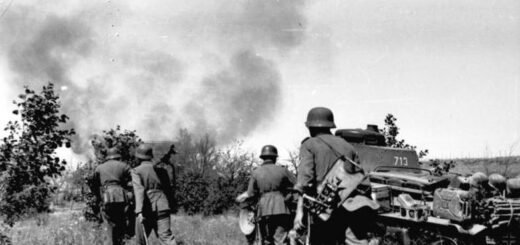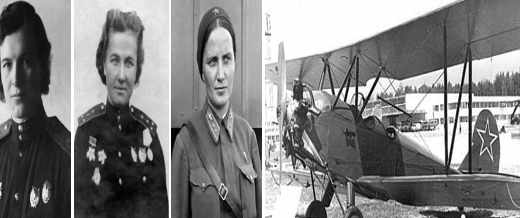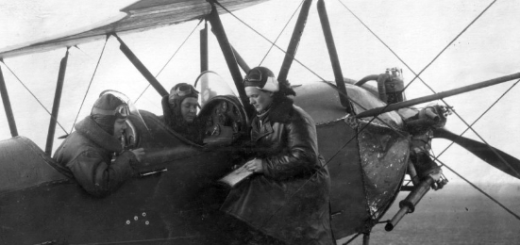How and why did Japan get involved in WWII?
Japan’s involvement in World WarII, culminating in its role as a major Axis power, was the result of a complex interplay of historical, political, economic, and military factors.
The path that led Japan into the war can be traced back to the late 19th and early 20th centuries, a period characterized by rapid modernization, aggressive expansionism, and an increasing sense of national destiny and entitlement. Understanding Japan’s entry into WWII necessitates exploring these multifaceted dimensions.
Historical Context and Early Expansionism
Japan’s modernization and militarization began in earnest with the Meiji Restoration in 1868, which restored imperial rule and initiated a period of rapid industrialization and modernization. This transformation was driven by a desire to avoid the fate of other Asian nations that were being colonized by Western powers. By adopting Western technologies and organizational structures, Japan sought to establish itself as a formidable global power.
The success of Japan’s modernization efforts was demonstrated in its victories in the First Sino-Japanese War (1894-1895) and the Russo-Japanese War (1904-1905). These victories granted Japan its first overseas colonies, including Taiwan and Korea, and marked the beginning of Japanese expansionism in Asia. The desire for further expansion was motivated by economic needs, including access to raw materials, markets for Japanese goods, and space for a growing population.
The Path to Militarism and Nationalism
In the 1920s and 1930s, Japan experienced significant political and economic turmoil, including the Great Kanto Earthquake of 1923, the financial crises of the late 1920s, and the global impacts of the Great Depression. These events exacerbated existing social tensions and contributed to a rise in militarism and ultra-nationalism within Japan. The military began to exert more influence over the government, advocating for aggressive foreign policies to secure resources and territory deemed necessary for Japan’s survival and prosperity.
The invasion of Manchuria in 1931 marked a significant escalation in Japan’s expansionist policy. The League of Nations’ failure to take effective action against the invasion emboldened Japan and led to its withdrawal from the League in 1933. Japan established the puppet state of Manchukuo in Manchuria, securing access to valuable resources. This act of aggression was the first step towards conflict with China and the Western powers.
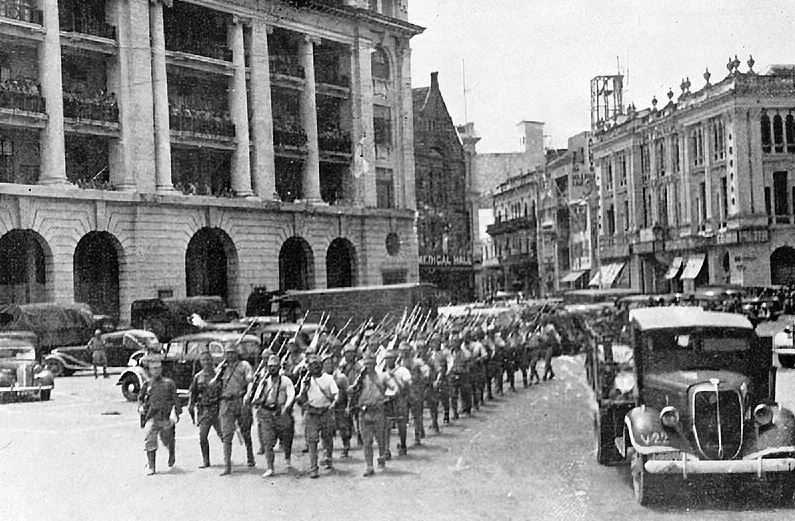
Starting in the early 20th century, Imperial Japan saw expansion as essential to the nation’s survival and prosperity, believing that the conquest of neighboring territories would secure the resources and space Japan needed to thrive. However, this path led to increasing isolation, conflict with major powers, and ultimately, to a devastating defeat. Image: Japanese soldiers in Singapore during the early 1940s.
Conflict with China and the Road to World War II
The Second Sino-Japanese War, which began in 1937 with the Marco Polo Bridge Incident, further entangled Japan in a quagmire of military and diplomatic challenges. Japan’s brutal campaign in China, including the massacre and rape of Nanking, alienated it internationally and led to economic sanctions by Western powers. The need for oil, rubber, and other resources to continue its military campaigns in China drove Japan to look towards Southeast Asia and the Pacific, regions under the influence or control of European powers and the United States.
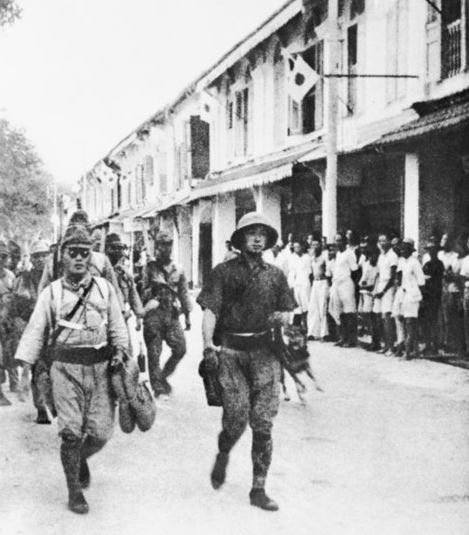
Japan’s entry into World War II was the culmination of decades of militarization, expansionism, and nationalist fervor, compounded by economic desperation and strategic miscalculations.
Alliance with the Axis Powers
As tensions with the Western powers escalated, Japan sought alliances with other nations that opposed the status quo. This led to the Tripartite Pact of 1940, in which Japan formally aligned with Nazi Germany and Fascist Italy, forming the Axis powers. This alliance was driven by strategic considerations, as it aimed to deter American intervention in the Pacific while Japan pursued its expansionist goals.
The United States and the Embargo
Relations with the United States, which had been deteriorating due to Japan’s aggression in Asia, reached a breaking point in 1941. The US, along with other Western nations, imposed an oil embargo on Japan in response to its occupation of French Indochina. This embargo threatened to cripple the Japanese economy and military, forcing Japan into a corner. With few options available to secure the resources necessary for its survival and continuation of its war efforts in China, Japan decided to strike against the United States and British interests in the Pacific.
Pearl Harbor and Beyond
On December 7, 1941, Japan launched a surprise attack on the US naval base at Pearl Harbor, Hawaii, hoping to neutralize the US Pacific Fleet and secure its dominance in the Pacific. This attack led to the United States’ formal entry into World War II.
Japan quickly followed up its attack on Pearl Harbor with invasions of British, Dutch, and American territories in Southeast Asia and the Pacific, securing the resources it desperately needed but also committing itself to a prolonged conflict with increasingly mobilized and determined adversaries.

World War II left Japan occupied by foreign powers for the first time in its history, marking a dramatic end to its imperial ambitions and the beginning of a new era of reconstruction and reflection.
Isoroku Yamamoto: The Japanese Admiral Who Planned Pearl Harbor Attack
Frequently asked questions about Japan’s involvement in WWII

Image: War aircraft
Why did Japan enter World War II?
Japan entered World War II primarily due to its imperial ambitions and the need to secure resources for its growing economy and military. Facing economic sanctions and embargoes from Western powers, Japan sought to expand its territory in Asia and the Pacific to access vital raw materials.
What led to the attack on Pearl Harbor?
The attack on Pearl Harbor was motivated by Japan’s desire to neutralize the United States Pacific Fleet, which it perceived as a significant threat to its expansionist activities in Asia and the Pacific. Japan aimed to cripple US naval power, thereby securing its dominance in the region and ensuring uninterrupted access to resources.
How did Japan’s alliances with Germany and Italy influence its role in the war?
Japan’s alliance with Germany and Italy, formalized in the Tripartite Pact, solidified its position as a member of the Axis powers. This alliance was strategic, aiming to deter American intervention in the Pacific and to support mutual military and political goals. However, it also entangled Japan in a broader global conflict, contributing to its eventual defeat.
What was the impact of Japanese occupation in Asia?
Japanese occupation in Asia was marked by harsh rule, economic exploitation, and widespread atrocities, including the rape of Nanking and forced labor. The occupation exacerbated suffering in occupied countries, fueled resistance movements, and left lasting legacies of bitterness and trauma.
How did World War II end for Japan?
World War II ended for Japan with its unconditional surrender on August 15, 1945, following the atomic bombings of Hiroshima and Nagasaki by the United States. Japan’s surrender marked the end of its imperial ambitions and led to a period of occupation and reconstruction under Allied supervision.
What were the long-term consequences of Japan’s involvement in WWII?
The long-term consequences of Japan’s involvement in WWII included the loss of its colonies and territories, significant destruction of its infrastructure and economy, and the death of millions of its citizens. The post-war period saw Japan’s demilitarization, democratization, and economic reconstruction, eventually leading to its emergence as a pacifist, economic powerhouse.
What happened at the Yalta Conference in 1945 and how did it lead to the Cold War?
How did Japanese society change after WWII?
After WWII, Japanese society underwent significant transformations, including the adoption of a new pacifist constitution, democratization of its political system, land reforms, and the establishment of a strong civil society. The economic reconstruction and rapid industrial growth in the following decades dramatically improved the standard of living in Japan.
What is the significance of the Tokyo Trials?
The Tokyo Trials, officially known as the International Military Tribunal for the Far East, were conducted to prosecute Japanese leaders for war crimes committed during WWII. The trials were significant for establishing legal precedents for international law, holding individuals accountable for acts of aggression and atrocities, and fostering a sense of justice and closure for victims.
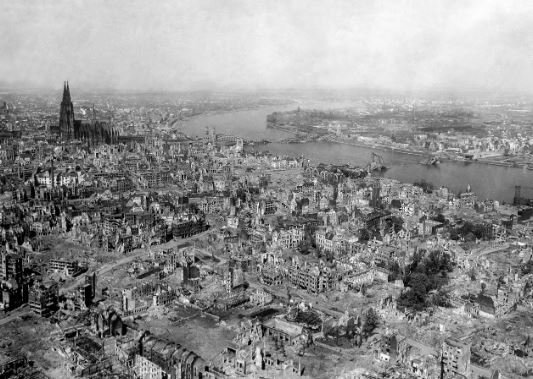
Japan’s involvement in World War II is a stark reminder of the dangers of militarism and expansionism, as well as the complex interplay of factors that can lead nations into catastrophic conflict.
